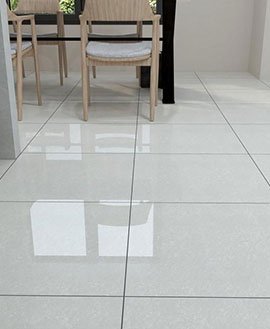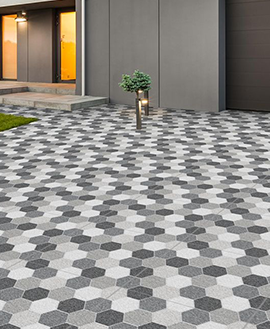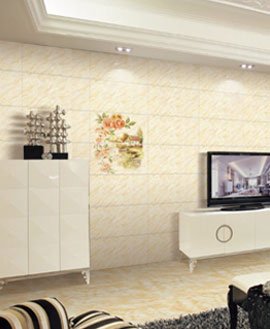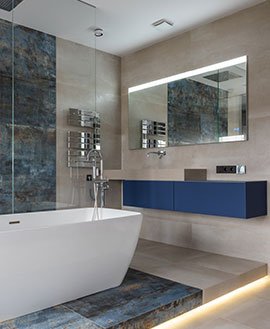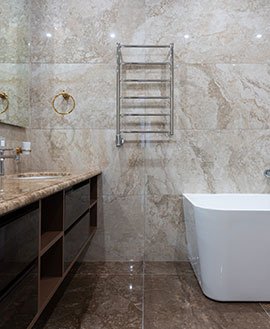When it comes to creating the ideal house or office, you will surely assign design tasks to a team of industry pros. To gain more confidence in this regard, having a functional knowledge of the industry is never a disadvantage. Contributing to your current initiatives and making educated judgments is advantageous.
The tiles you choose will have a big impact on the overall design. The vitrification technology is used by both ceramic and vitrified tiles. Because of this process, liquids do not collect, resulting in matte tiles. They are also quite easier to clean and have non-slip coverings. Furthermore, both types of tiles may be used indoors and outdoors.
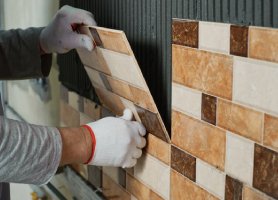
What are ceramic tiles?

Ceramic can be defined as a term that is used to refer to all kinds of natural clay that is prepared by mixing clay with other minerals and solvents. Ceramic goods ranging from tiles and dinnerware to dental inlays and fine art are available for purchase. Its resistance to force and stains is enhanced by high-temperature treatment.
Ceramics are strong and can endure high temperatures and acids, yet they are brittle and weak under tension and shearing. Floor tiles, pipes, bricks, cookware, tableware, sanitary ware, ceramic goods, gas and fire radiant, kiln linings, glass and steel crucibles, knife blades, disc brakes in cars, watch cases, and biomedical implants are all examples of applications.
What are vitrified tiles?
Silica is used with 40% clay to create a vitrified ceramic tile. The mixture is heated or baked at a high temperature before being pressed into form to make these tiles. It is similar to viewing through a window. Vitrified tiles emerge as an ideal choice for flooring projects due to their minimal porosity, scratch resistance, and low maintenance properties.
Vitrified tiles have become a popular tiling alternative due to their hardness, density, stain resistance, and strength. There are three types of vitrified tiles: glazed vitrified tiles, double-charged vitrified tiles, and whole-body vitrified tiles.

What’s the difference between them?
| Ceramic Tiles | Vitrified Tiles |
| Ceramic tiles are made by combining clay, earth, and water | They are prepared from a mixture of clay, silica-quartz, and feldspar. |
| They need continual glossing | No glazing is needed. A shiny finish can be done through manual polishing. |
| They are more prone to bending and breaking, thus less durable | Apart from being sturdier, they also feature high bending and breaking capability. |
| They’re porous. It means they absorb water quickly. | Having a non-porous surface, their moisture content remains low. |
| These tiles feature an earthy, natural, and alluring look, given their coarseness, and an external finish | They boast a simple and smooth finish along with a manufactured appearance. |
| Ceramic tiles possess improper resistance to stains and scratches | Vitrified tiles boast a superior level of resistance against scratching and staining. |
Which one leads the way?
Both are fantastic flooring alternatives. There comes a question, which one carries the upper edge – ceramic or vitrified? Getting the most perfect answer is not a big thing as experts suggest going with a combination of both types keeping in mind the exact location and desired aesthetics.
Ceramic tiles are a good option for vitrified tiles for flooring since they offer a more pleasant and colorful appearance that contrasts with the industrialized, man-made aspect of vitrified tiles.
Furthermore, vitrified tiles are frequently advised for use in high-traffic areas and on the exterior, whereas ceramic tiles are best suited for kitchens, bathrooms, and stairwells. One important aspect that holds optimal value is the overall visual appeal that architects envisage achieving, which is precisely a set of rules that need to be strictly followed.
The Conclusion
At Regatta Tiles, we offer a wide collection of both ceramic and vitrified tiles to B2B tile buyers across the world. Being one of the leading tile exporters from India, we promise impeccable quality tiles, highly competitive prices, and exceptional client support. Explore our collection today.


